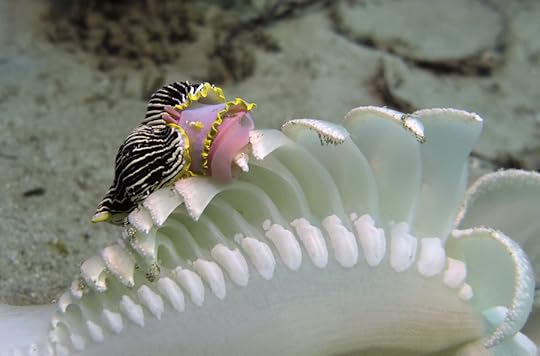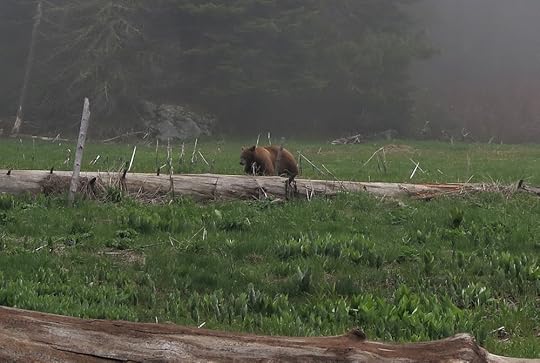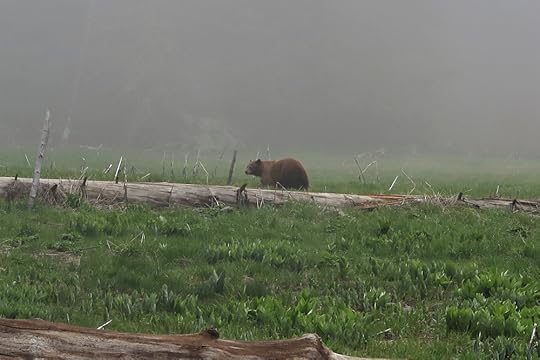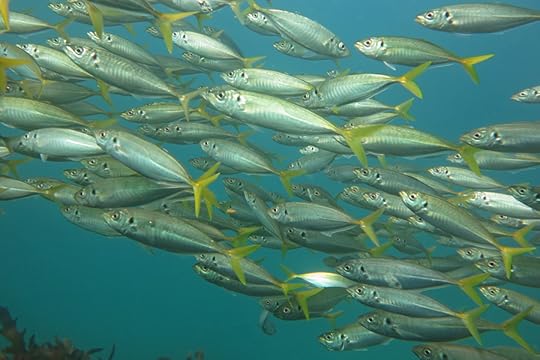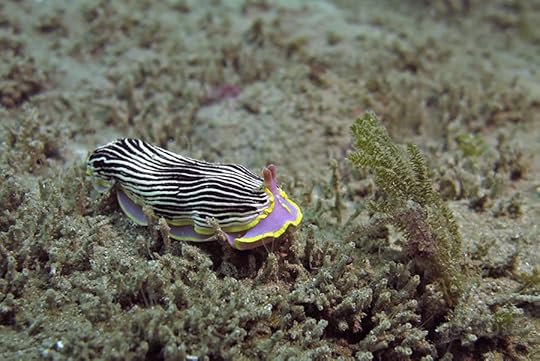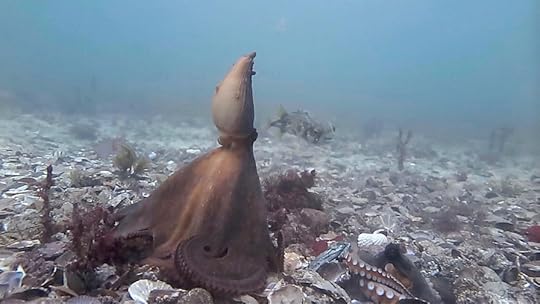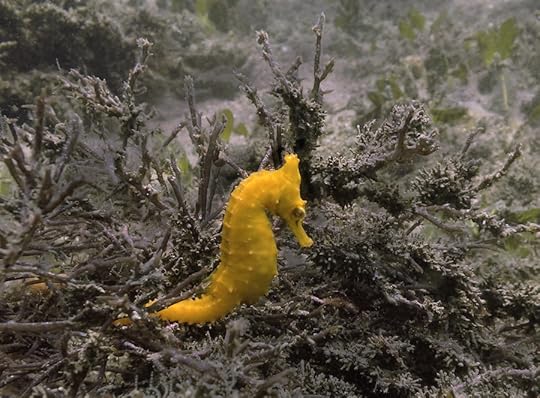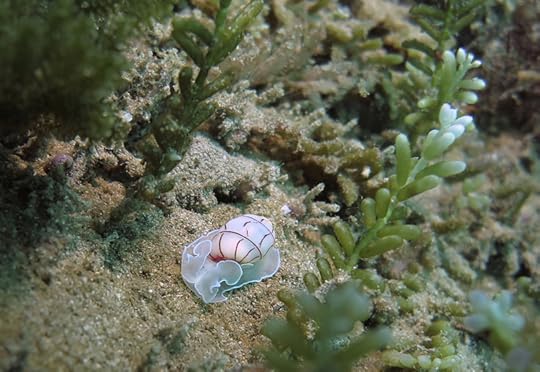Peter Godfrey-Smith's Blog, page 10
July 17, 2016
39. Seasons, Cycles, and Succession
Back into the sea. Yesterday we did a trip to Octopolis, the octopus observation site I’ve written about here many times. We arrived at the site and found three large carpet sharks (Wobbegongs) sprawled next to and on top of it. We’ve seen this before. When the sharks are present, we find very few octopuses, and they keep their heads down. Four octopuses could be seen at the site yesterday, which is not bad, but less than a third of what we’ve seen there before.
Wobbegongs are supposed to be...
June 14, 2016
38. The Saddest Day
The Saddest Day
May 4, 2016
37. On Land
That’s the first bear I’ve seen in the wild. The photo was taken last week in the Sierra mountains of California, where the bear was grazing in a meadow. I stood on a log and watched it for about half an hour, as mist swept intermittently across and obscured us both.
Though it’s brown, I’m told this is a ‘Black Bear,’ Ursus americanus, the only species in the Sierras. It was a tremendous animal to watch, imagining the living engine of dark blood and muscle inside.
The bear was surrounded by...
April 8, 2016
36. Seafood
The text of this post is a talk I gave yesterday at a symposium at New York University: “Seeing Seafood as Animals,” organized by NYU’sAnimal Studies Initiative.
Animal life (very probably, all life) first evolved in the sea. So did perception and behavior, nervous systems, learning and memory. The history of animals began some time between 700 million and a billion years ago. Their fossil record begins with an enigmatic period called the Ediacaran, 635-540 million years ago, and the Cambria...
March 19, 2016
35. Flatland (Hypotheses 3)
This post is a continuation of a series I started a few months ago, looking at old and new scenarios for the early evolution of animals. This thinking was prompted by a pair of of conferences I went to over the last few years, one in Tübingen and one in London.
The first animals evolved in the sea. That setting brings with it many consequences –a particular chemical environment, and physical features such as ease of motion. The first animals may have floated about as semi-organized balls of...
February 26, 2016
34. Don’t Touch
This is ablue-lined octopus(Hapalochlaena fasciata), seen at Fairlight in Sydney last month. My previous post was about an octopus signaling paper; the animal above is perhaps the most famous octopus signaler, and the message is: back off!
The blue lines are not always switched on; they’re produced when you get too close. If you get even closer and the animal bites you, you can be dead in minutes. Their bite contains tetrodotoxin, one of the most powerful nerve poisons. Here’s a close-up, sh...
January 29, 2016
33. Octopus Signals
The octopus above has raised his mantle high over the back of his head. Another octopus sits below, to the right, and in center screen a puffer fish looks laconicallyon. Yesterday our third research paper about theOctopolis site, which was discovered by Matt Lawrence in 2009, came out in Current Biology. It’s freely available at the journal’s website at present.
The theme of the paper is signaling and displays between octopuses at the site. David Scheel is the first author, and he did most o...
January 9, 2016
32. Rivalry, Continued
Last April I wrote a post called “Rivalry,” about the use of animals in experiments. It was prompted by a controversy over the work of Nikos Logothetis of the Max Planck Institute for Biological Cybernetics. Logothetis has for decades been a leader in the scientific study of consciousness. He has done elegant and ground-breaking work. In 2014 some shocking undercover video was released of suffering by laboratory monkeys in his institute.The monkeys have electrodes permanently implanted in th...
December 25, 2015
31. Lineata
Sometimes I see an animal in the ocean and the only thought to have is why? Why on earth does it look like that? The animal above is Bullina lineata, one of a group known informally as bubble-shells. I saw this one at Jervis Bay, in Australia, near our Octopolis site, last week. I’ve only seen the species once before in the sea, and both times I was quite baffled by them. As you can see from the photo above, their milieu is a silty and weedy sort of world, and they are very small (the ones I...
Peter Godfrey-Smith's Blog
- Peter Godfrey-Smith's profile
- 685 followers


